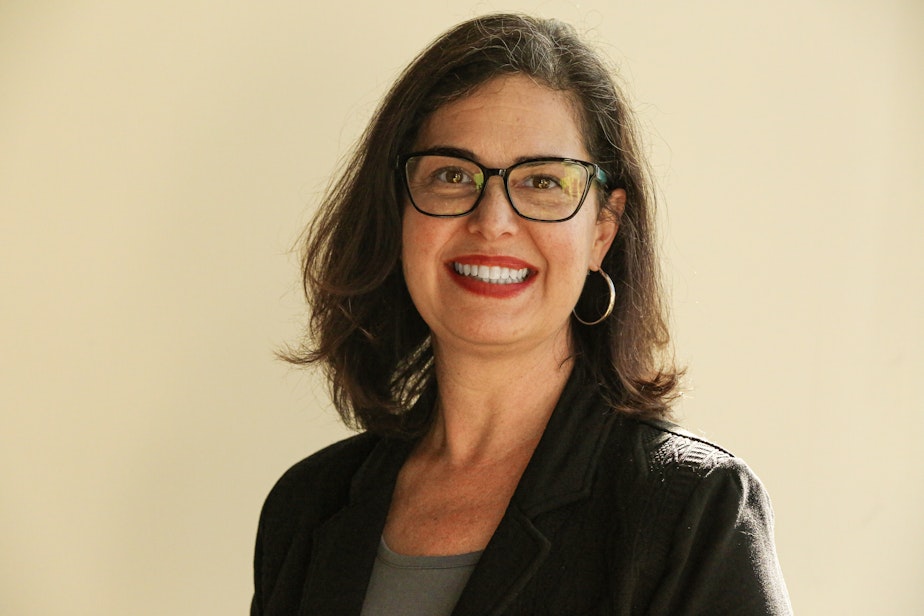How much are safer streets worth? Seattle leaders, voters to decide

Making roads (and sidewalks and trails) safer for everyone can be an expensive proposition.
The Seattle City Council is considering how much to ask taxpayers to cough up for the November 2024 transportation levy.
Mayor Bruce Harrell has proposed a $1.45 billion levy for the fall ballot. The city council gets to say what goes in the package before it goes to voters.
Harrell’s proposal would double funding for the city's Vision Zero program aimed at eliminating traffic deaths, build 250 blocks of sidewalks in four years and add barriers to a third of the city’s bike lanes.
RELATED: $1B for sidewalks, bike lanes, and road repairs: Seattle transportation levy ahead
Advocates for pedestrians and bicyclists say the proposed levy is too small to address the toll of deaths and injuries on Seattle’s roadways. Traffic crashes killed 27 people and seriously injured more than 250 in Seattle in 2023, according to the Seattle Department of Transportation.
“This is really important to me,” Councilmember Tammy Morales said Tuesday at a public meeting on the levy.

“I am tired,” she said as she choked up, “of coming to briefing and talking about my constituents who have been killed because our roads are not safe.”
Councilmember Rob Saka called the levy a once-in-a-lifetime opportunity to address the needs of a growing city but urged the council to be mindful of the financial impacts on homeowners.
“Could go up, could go down, who knows?” Saka said of the levy amount.
Under Harrell’s proposal, the biggest slices of revenue would go to street paving ($423 million) and bridges ($221 million), with the smallest slice going to improve freight transportation ($25 million).
“The need is great here,” Francisca Stefan of the Seattle Department of Transportation said of paving. “This is the fundamental way we keep people safe, whether they're biking, walking, they're moving in a vehicle, or they're moving goods.”
The city’s Vision Zero program, which aims to eliminate traffic deaths and serious injuries by 2030, would get $162 million, more than double its current funding.
Other major slices include:
- transit corridors ($145 million)
- pedestrian safety ($135 million)
- bike safety ($114 million)
- traffic signals and operations ($100 million)

Most public commenters on Tuesday called for a bigger levy, of up to $1.9 billion over eight years, to make getting around Seattle safer.
Claudia Mason spoke after setting a picture of her husband, Robb Mason, on the lectern.
He was killed by a hit-and-run driver while biking home to West Seattle from work in 2022.
“Many cycling routes in our city expose the cyclists to unnecessary danger," Mason said. "While no amount of money could ever make up for what I have lost, I do believe that money could help prevent future deaths and injuries.”
James Mikulec said he and his wife sold one of their two cars to be able to afford living in Seattle.
“We travel on bikes, and oftentimes the bike lanes that we are on suddenly stop, like on Pine and Yesler, and the two of us find ourselves in the middle of three or four lanes of traffic without bike lanes or any kind of defense,” he said.
RELATED: Despite safety measures, promises, and plans, more people are dying on Washington roadways
“Is the money being spent on bikes really necessary, and could that be used in a different way?” commenter David Aaron asked. The North Seattle resident said his property taxes have gone up 35% in the past three years.
“I drive to Seattle, and I don't see a lot of people on bikes,” Aaron said. “The money would probably be better off [spent] on buses.”
Lilly Hayward with the Seattle Metropolitan Chamber of Commerce called for keeping the levy amount at $1.45 billion but increasing the funding dedicated to freight movement.
Harrell’s proposed levy would cost the typical Seattle homeowner about $470 per year. It would cost the same homeowner $550 per year if the levy is enlarged to $1.7 billion and $615 per year if enlarged to $1.9 billion, according to City Council staff analyst Calvin Chow. Chow said the current transportation levy, which expires at the end of 2024, costs the typical homeowner about $300 in property tax.
Another public hearing on what could be the biggest property tax levy in Seattle history is set for June 4, while the city council plans to discuss it in meetings on June 4, June 18, and July 2.
RELATED: If property values go down in King County, will taxes follow? Not necessarily
